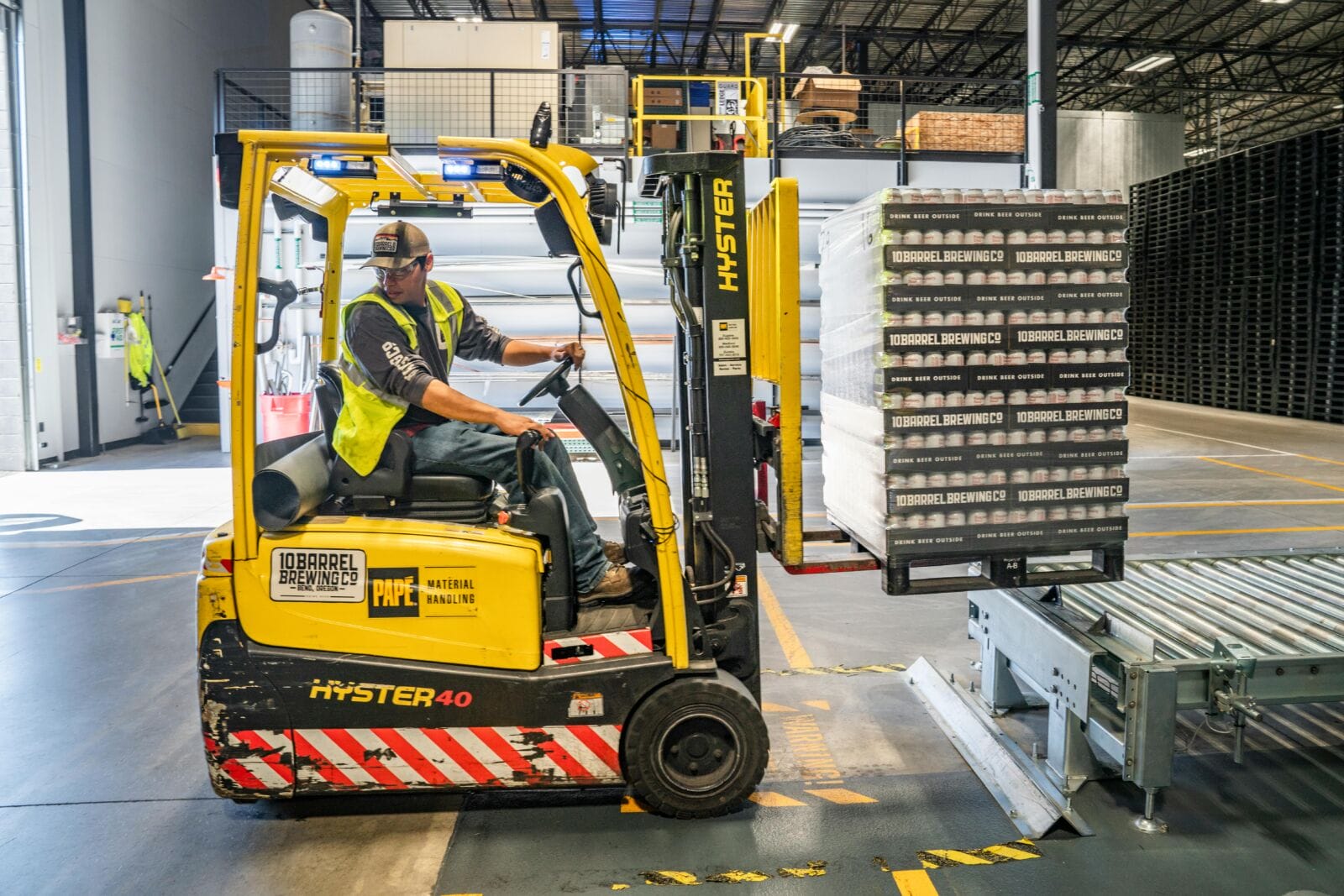In today’s fast-paced market, it is essential to have efficient warehouse operations to stay ahead of the competition. Meeting the rising demand for order processing and organized inventory management requires embracing creative solutions. This article delves into five strategies that can enhance warehouse systems, improve productivity, and optimize efficiency.
Implementing Advanced Warehouse Management Systems (WMS)
A Warehouse Management System (WMS) is a tool crafted to oversee and enhance warehouse activities. From tracking inventory to fulfilling orders, a WMS offers solutions that streamline operations. Implementing a WMS can significantly enhance accuracy, lower operational expenses, and increase customer satisfaction.
Modern WMS platforms offer features like real-time inventory tracking, automated restocking, and robust reporting capabilities. These functionalities enable warehouses to react to changes in demand, reduce stock shortages, and make the most of resources efficiently. By utilizing a WMS, warehouses can achieve higher efficiency and productivity.
Additionally, a WMS integrates with other enterprise systems, providing a seamless flow of information across the organization. This integration helps in aligning warehouse operations with overall business goals. Moreover, the data analytics capabilities of modern WMS allow managers to make informed decisions based on real-time insights. As a result, companies can anticipate trends and adjust strategies accordingly. Finally, the scalability of WMS solutions ensures that they can grow with the business, supporting expansion and increased operational complexity.
Utilizing Automation and Robotics
Automation and robotics are revolutionizing warehouse operations. Technologies such as robotic pickers, automated guided vehicles (AGVs), and conveyor systems can greatly reduce labor requirements while boosting speed and minimizing errors. These advancements not only increase productivity but also enhance safety by decreasing the likelihood of injuries related to repetitive tasks.
For example, robotic pickers are adept at swiftly and accurately retrieving items from shelves, while AGVs autonomously transport goods throughout the warehouse. These automated systems operate continuously to help warehouses meet deadlines and manage order volumes. By embracing automation, businesses can outpace competitors and offer better service to their customers.
Furthermore, automation helps in reducing operational costs by minimizing the need for manual labor. This, in turn, allows businesses to reallocate resources to other critical areas. Additionally, automated systems can work in environments that may be hazardous to humans, further improving safety standards. The integration of AI and machine learning with robotics also ensures continuous improvement and adaptation to changing operational needs. Finally, the implementation of automation fosters a culture of innovation and efficiency, encouraging employees to focus on strategic tasks rather than mundane activities.
Improving Material Handling with Specialized Machinery
Efficient material handling is essential for smooth warehouse operations. Utilizing specialized equipment like 5th-wheel forklift attachments significantly enhances these processes. These attachments improve the functionality and versatility of forklifts, enabling them to handle a wide range of tasks with greater efficiency.
For example, using 5th-wheel forklift attachments makes it easier to transport irregularly shaped loads, enhancing maneuverability and reducing the time required for item movement. Investing in such equipment allows warehouses to boost efficiency, minimize downtime, and ensure careful material handling. Additionally, specialized machinery reduces the wear and tear on standard equipment, prolonging its lifespan and leading to long-term cost savings by decreasing the need for frequent repairs and replacements.
Moreover, advanced attachments enhance the safety of material handling operations by providing better stability and control. Proper training for employees on using this equipment further enhances operational efficiency and reduces the risk of accidents. Ultimately, the versatility of specialized machinery enables warehouses to adapt to various handling needs, increasing overall flexibility and productivity.
Embracing IoT and Intelligent Technology
The Internet of Things (IoT) is transforming warehouse operations by offering real-time visibility and control over various processes. Smart sensors and devices can monitor temperature, humidity, and inventory levels, empowering warehouses to optimize storage conditions and prevent spoilage or damage.
The use of IoT technology in warehouses also enables predictive maintenance, helping to address equipment issues proactively to prevent costly breakdowns. Through the collection and analysis of data from connected devices, warehouses can make informed decisions, optimize resource allocation, and enhance overall operational efficiency. Embracing IoT and smart technology is a crucial step in fostering an agile and responsive warehouse environment.
Additionally, IoT can facilitate seamless communication between different systems and devices within the warehouse, creating a cohesive and integrated operational ecosystem. This connectivity allows for more efficient coordination and management of resources. Moreover, IoT technology can help in tracking the movement and location of goods within the warehouse, reducing the likelihood of lost or misplaced items.
The integration of IoT with other advanced technologies, such as AI and machine learning, can further enhance predictive analytics and operational insights. Finally, the implementation of IoT solutions can provide a competitive advantage by enabling faster and more accurate responses to market demands.
Optimizing Warehouse Layout and Design
Enhancing the layout and design of a warehouse is vital for maximizing productivity and minimizing unnecessary movements. A well-thought-out layout ensures that goods are stored logically, reducing the time and effort needed to locate and retrieve items. This streamlined process results in faster order fulfillment and smoother workflow operations.
When optimizing warehouse design, it is crucial to take into account aspects like aisle width, shelving height, and the strategic placement of high-traffic zones. Employing software tools for layout simulation and planning can help identify the most effective configurations. Furthermore, regularly assessing and adjusting the layout based on operational data can drive continuous enhancements, leading to sustained efficiency improvements.
Additionally, an optimized layout can improve safety by reducing congestion and minimizing the risk of accidents. Efficient use of space can also lower operational costs by maximizing storage capacity. Incorporating ergonomic design principles can enhance employee comfort and productivity. Furthermore, clear signage and labeling can facilitate easier navigation and faster item retrieval. Finally, involving employees in the design process can provide valuable insights and foster a sense of ownership and collaboration.
Conclusion
The realm of warehouse operations is continually evolving, necessitating a proactive approach toward embracing innovative solutions to remain competitive. By incorporating cutting-edge Warehouse Management Systems, leveraging automation and robotics, improving material handling with specialized equipment, embracing IoT and smart technology, and optimizing warehouse layout and design, companies can achieve significant enhancements in efficiency and productivity.
Keep in mind that the process of refining warehouse operations is an ongoing journey. By continuously exploring new technologies and approaches, you can ensure that your warehouse remains flexible, efficient, and equipped to meet the demands of today’s market.
Are you prepared to elevate your warehouse operations? Take the first step by integrating these solutions today! Implementing these strategies will not only enhance your warehouse operations but also position your business for long-term success. By staying ahead of the curve, you can ensure that your warehouse is always ready to meet the challenges of a dynamic and ever-changing market.




